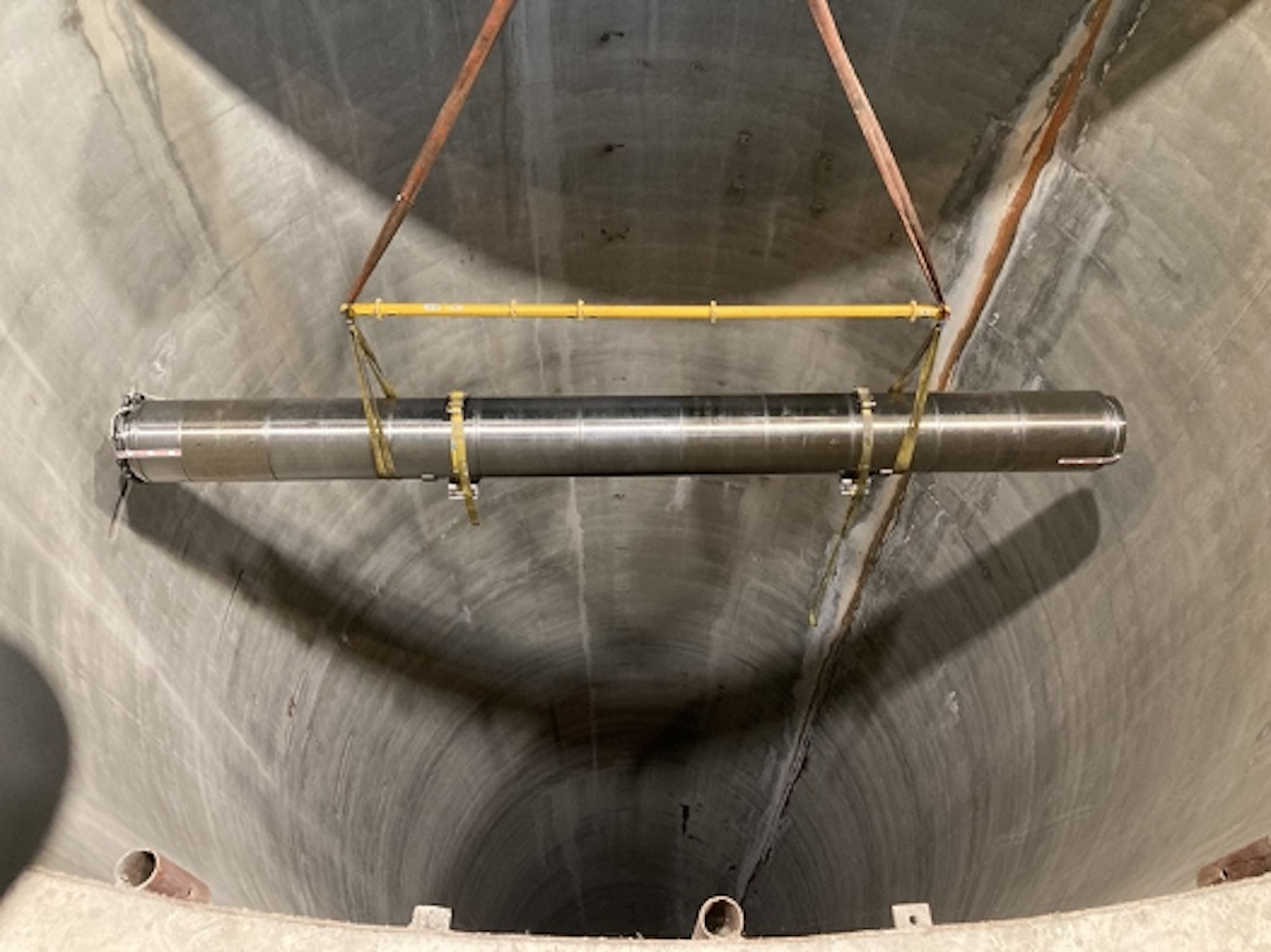
The new spare LHC beam dumps were lowered into the accelerator tunnel in January. They will remain in the UX65 cavern until they are either used or recycled to produce the HL-LHC beam dumps. (Image: CERN)
When particle beams circulating in the LHC need to be stopped, they are directed towards the beam dumps. In 2020, during Long Shutdown 2, the main LHC beam dumps, which had been in place in the accelerator from the start, were replaced by spare dumps - themselves heavily modified with respect to the original design - because they were showing signs of wear and tear. To withstand the onslaught of the current run, Run 3, these spares had been upgraded before being installed as the main beam dumps. They are still in place today and operating successfully.
The autopsies carried out on the first beam dumps highlighted their strengths and weaknesses. Those findings, coupled with additional studies carried out at HiRadMat, led to a strategy for designing new spare beam dumps and the future HL-LHC beam dumps.
A tried and tested recipe
Originally, the beam dumps were made of three main materials: blocks of high-density graphite and discs of low-density graphite held in place by two discs of extruded graphite. "The autopsies revealed that both of the extruded graphite discs were cracked, while the high- and low-intensity graphites were generally in good condition, thereby validating their use in the beam dumps for Run 3," recalls Nicola Solieri, project engineer in charge in the SY department's Targets, Collimators and Dumps section (SY-STI-TCD).
The new spare beam dumps therefore comprise these two components: six blocks of high-intensity graphite and 1700 discs of low-density graphite, now contained between two carbon-fibre-reinforced carbon discs - a material tested and validated at HiRadMat - which replace the old extruded graphite discs.

A novel design: easier to "cut"
"The autopsy and disposal of the original beam dumps brought to light a major challenge: how to dismantle them," says Marco Calviani, SY-STI-TCD section leader. "In 2021, cutting them open was a really tricky operation, in particular because of their radiation levels. In the end we managed to find a solution using CERN's expertise, but it was clear that we would need to address this issue for future beam dumps." To do so, the team in charge of the project came up with a "detachable" beam dump design (see images 1-3). "To make it easier to dismantle the beam dumps in the future, as well as making the LHC's operation more sustainable and improving waste management, we wanted to keep the number of welds to a minimum, and we left a 5-cm space between each of the components to make it easier to take them apart," explains Nicola Solieri. These measures will greatly facilitate dismantling operations in the event that the spare beam dumps do end up being used and thus become radioactive. And if they are not used in the LHC, their components will be easier to reuse for the HL-LHC beam dumps.



"The whole process of developing these new beam dumps, from design to assembly, was conducted in house with CERN's competences, which was not the case with the original beam dumps," underlines Damien Grenier, technical engineer in charge of the assembly of the dumps. "This way, we ensure that CERN has all the know-how and skills required for the key stages of beam dump production and assembly, ready for the HL-LHC." Indeed, challenges abound for the design of the HL-LHC beam dumps, which will be subject to unprecedented beam intensities. A complex R&D programme is under way with a view to identifying and validating new materials for the beam dump core and container, as well as new assembly techniques.
Meanwhile, the spare beam dumps were finalised in autumn 2023 and installed in their storage cavern at the beginning of 2024. "The two spare beam dumps were produced in record time thanks to the involvement and the tireless efforts of many colleagues from various CERN groups and departments," continues Marco Calviani. "This is further proof that many challenges can be overcome in house thanks to the team spirit that reigns at CERN and using materials developed by industry."






